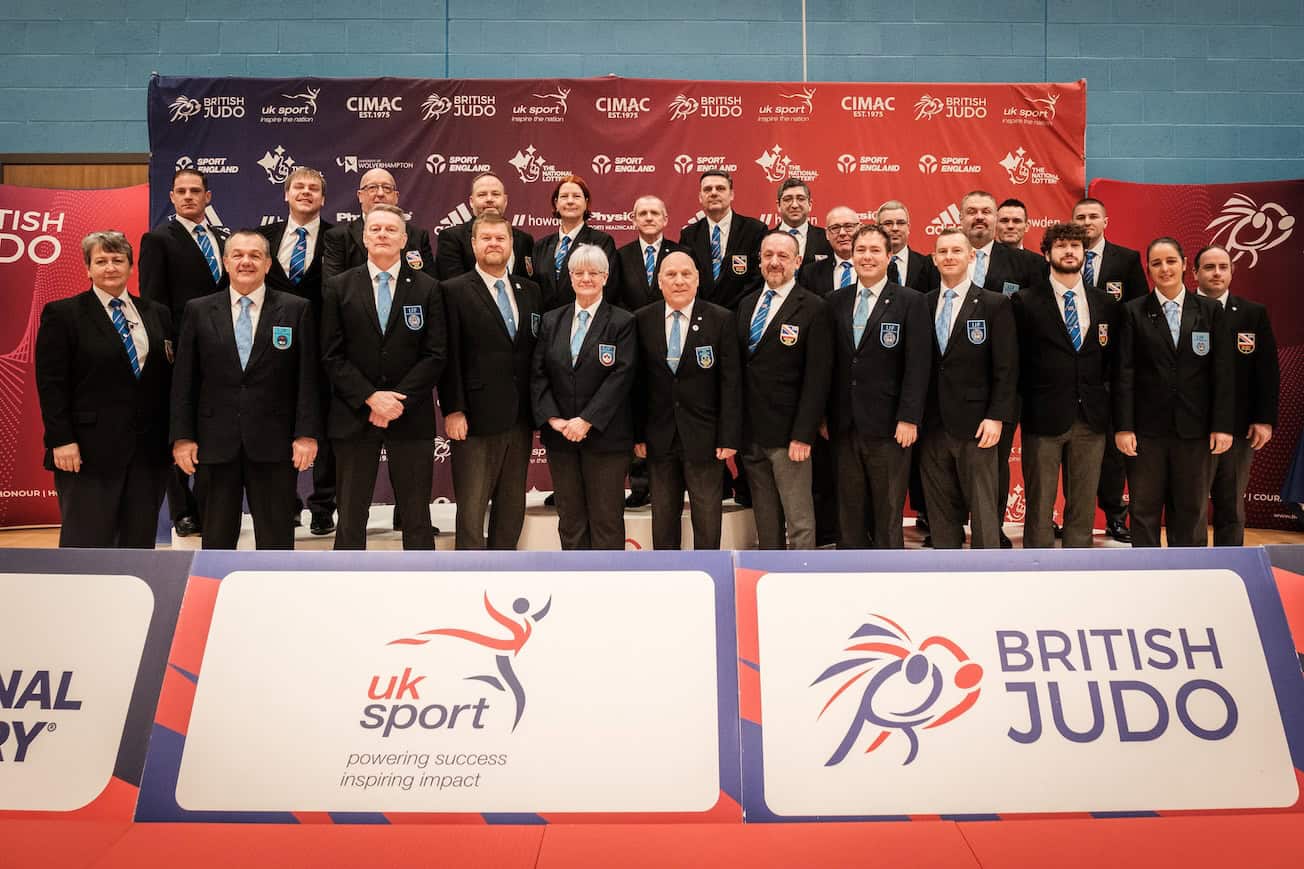For World Diabetes Day (14th November) we spoke to a group of young judoka who use the sport to manage the condition.
The International Diabetes Federation estimates that by 2040 more than 640 million people world wide will be living with diabetes.
Type 1 diabetes results from the pancreas’s failure to produce insulin. In type 2 diabetes the body builds a resistance to insulin. Whilst the cause of type 1 is not known the primary cause of type 2 is excessive body weight and a lack of sufficient exercise.
Regular physical activity is a key component in managing (type 1) or avoiding (type 2) the condition.
Toby Beamiss (16), Cailean McCallum (17) and Ethan Evans (9) all live in different parts of the country and all have type 1 diabetes. They also participate in judo which helps them manage the condition.
Toby Beamiss
Toby had just started Year 9 at school when he was diagnosed with type 1 diabetes.
“Initially we all thought it he’d got a nasty bug”, recalls Toby’s mother Anne Wombwell. “But we ended up taking him to Addenbrooke’s Hospital in Cambridge, where the support they gave us and continue to give us has been outstanding.
Coming to terms with having a lifelong condition can be difficult for many people with diabetes. “When he was in hospital I said ‘you’re still here, you can still do all the things you want to do, you can eat what you want within reason you just need to look after yourself’”.
Toby had been doing judo since the age of eight and is from a judo family with his father and uncle also having participated in the sport. He started his judo career at Happidojo before moving on to Melbourn Judo Club. He has also attended sessions at Bishop’s Stortford Judokwai. Toby also competes in competitions on a regular basis and won a silver medal at this year’s British Schools Championships.
Within a couple of months of being diagnosed Toby was back in the dojo doing the sport he loves. Toby had lost a significant amount of weight, one of the main symptoms of someone with undiagnosed type 1 diabetes.
“Obviously because he lost a lot of weight, strength wise it took him a bit of time to get back into it but since then he has literally gone from strength to strength”.
“It [having type 1 diabetes] doesn’t stop him doing anything”, Anne points out. “There are just a couple of things we need to check before he goes on to the mat. There’s a lot of testing that goes on to ensure that his glucose levels are at a certain level”. Blood Glucose (often referred to as Blood Sugar levels) is the amount of sugar present in the bloodstream and is the primary source of energy for the body’s cells.
“Managing diabetes is all about being organised”, Anne explains. “Where ever he is we always make sure he has spares of everything he needs be it insulin to bring his blood glucose level down or glucose sweets to bring him up if he’s low.
“There is also a bit of trial and error as well. In competition we have worked out that we try and get Toby’s blood glucose levels between 10-12 because that’s when he fights at his best. This is a little higher than usual but he needs that extra energy when he’s competing. He’s still growing so we are having to consider that side as well tweaking things here and there to make things a bit easier for him”.
People with diabetes can lose confidence as they adjust to lifestyle changes brought about by diabetes, especially in relation to the exercise they do. “The club where fantastic. Toby’s coach Iain Reid has been brilliant. He’s done his own research and there’s been a lot of dialogue between us. He really looks at what he can do to help Toby not just with his judo but with his diabetes as well. I’m very fortunate in a way to also have Paula (Cailean McCallum’s mother), who I know very well and between the two of us we help both of them out. It’s a real community and team effort.
“Diabetes is completely manageable, you just have to have the knowledge and that’s the key thing. But doesn’t, and shouldn’t stop you from doing anything especially judo”.
Toby will be competing at the British Cadet Championships next month.
Cailean McCallum
Cailean had already been doing judo for two years before he was diagnosed with type 1 diabetes when he was 10 years old. “I was still quite young at the time and had a lot of people supporting me so the diagnosis didn’t affect me doing judo that much, I just got on with it”, said Cailean, who is currently ranked 12th in the British -73kg rankings.
Judo competitions can be long with fights spread out over a single day. “Competition days can be quiet long and my blood sugars will usually go high obviously from the adrenaline, but its nothing that can’t be managed”. High blood glucose levels occur when there is too much glucose/sufficient level of insulin in the body. Symptoms of a diabetic going hyperglycaemic include impeded concentration levels and moods and abnormally frequent toilet breaks. In contrast hypoglycaemic symptoms, when a diabetic blood glucose level drops to low, includes going pale and sweating, lack of energy, and shakiness and a rapid heartbeat.
Cailean trains at Happidojo and has known Toby for a long time: “It came as quite a surprise to me when he came in and told me he was a diabetic as well. At first I didn’t believe him but then his Dad stepped in and said he recently been diagnosed. We are both do the same sport and we are both on the same team [British Teams representing the Eastern region] so we’ll give each other tips about managing certain things.
The 2015 British Judo Young Volunteer of the Year is also a junior gold Level referee. Cailean is also currently training to become a Level 1 coach.
Ethan Evans
Ethan was diagnosed with type 1 diabetes just after his fourth birthday and has been doing judo for 18 months. “It was a lot to take in and took us a good few months to get used to it”, recalls Ethan’s mum Joy. “Initially when he first started at Haltwhistle Judo Club he was having to sit out of some of the sessions because his blood glucose levels were too high or too low. That did slow him down start with but it certainly didn’t put him off his enjoyment of the sport.
“Then with the help of the coaches we worked out how to juggle insulin dosages at home so that it wouldn’t impact on the judo training he does. One of his coaches Carol Drummond, is a close friend of family so everyone at the club was really understanding and supportive. We were able to sit down with her beforehand and discuss with how we were going to manage it, and its all worked out really well so far. The coaches gave Ethan extra encouragement when it was needed. They also gave him DVDs of judo competitions and techniques that he could watch whilst he was at home so he wouldn’t feel that he had missed out.
Diet is one of the most important elements in controlling blood glucose levels for diabetics, and this is done through ‘Carb Counting’. “Every food has carbohydrates in, not only white sugar but also healthy food like fruit and vegetables have natural carbohydrates in so we have to count the number of carbohydrates in everything he eats. We add all these up and then use a clever little mathematical equation based on his own unique insulin needs and the carbohydrates in his food to determine how much insulin he needs to take”, Joy explains.
Most people with diabetes take insulin injections to manage the condition. However, like Toby and Cailean, Ethan is on an Insulin pump, a small device that constantly delivers amount of short acting insulin via a catheter placed under the skin. “There’s a cannula that’s in Ethan’s leg where the insulin enters his body. When he’s at training he has to take his pump off as during contact sports it could get pulled out.
“Ideally, you shouldn’t be off a pump for longer than an hour as you don’t have any insulin in your system after that. The sessions only last for an hour so judo is perfect for him.
Poor control of a diabetic’s blood glucose levels can lead to complications in later life including heart disease, nerve damage, vision problems and even amputation. “Judo helps Ethan maintain his blood glucose levels not just when he is doing judo but a good 24 hours after the exercise has finished, the old adage: your muscles keep working after exercise as well as during it.
“Looking at the longer term the healthier he is as a child, the healthier he will be when he is an adult. Doing judo now is going to help him hopefully avoid complications from diabetes when he is older.
“Judo has been perfect for Ethan. It’s a great sport in itself but the confidence that Ethan has gained since he has been doing has been amazing. All of his friends at the club know that he’s diabetic and know what to look out for. That community support has made Ethan feel more confident as he doesn’t feel different to anyone else or singled out”.
For more information about diabetes visit www.diabetes.org.uk.


























